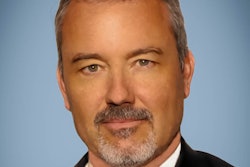
Female doctors earn less than their male peers -- and it's time to stop using the same old theories to explain why, according to a study published online August 15 in the Postgraduate Medical Journal.
Previous research has theorized that pay disparities between men and women result from women's work being undervalued or women working fewer hours and being less productive. But these hypotheses don't stand up to the data, according to a group led by Dr. Tejas Desai, a nephrologist at the W.G. (Bill) Hefner Veterans Affairs (VA) Medical Center in Salisbury, NC (Postgrad Med J, August 15, 2016).
"Unfortunately, these theories are based on analyses of data that are susceptible to bias and/or not adjusted for confounding variables," the authors wrote. "After adjustment for work hours, years of experience, and productivity, female healthcare providers are still reimbursed less than male providers."
Adjusting for variables
Desai and colleagues used Medicare healthcare provider reimbursement data for the 2012 calendar year, including more than 3.5 million records from more than 245,000 providers. The researchers tracked 13 medical specialties, not including radiology; the majority of these providers were generalists, either in internal medicine (37%) or family practice (32%). Radiology was not included because the study focused on internal medicine specialties, Desai said.
The male-to-female ratio of providers was 70 to 30. No specialty had an equal percentage of male and female providers, although endocrinology came close, with a male-to-female ratio of 57 to 43.
The researchers found that in 11 of these 13 specialties, women received statistically less reimbursement than male providers. In an unadjusted analysis, female providers were reimbursed $34,126 less than their male counterparts. When the researchers adjusted for years of experience, productivity, and hours worked, the results showed that female physicians were paid $18,677 less than their male peers.
The results were surprising to Desai's group, he told AuntMinnie.com.
"We hear those three reasons as to why women make less than men all the time," he said. "So we thought that if we adjusted for them in our data, we wouldn't see a difference in pay. But we found just the opposite."
In an editorial accompanying the study, Dr. Fiona Karet Frankl of the Cambridge Institute for Medical Research in the U.K. cautioned that expecting time to fix the problem doesn't work.
"When I started medical school in 1980, 52% of my class was female, but some 35 years later, only 13% of my professorial cohort is," she wrote. "We speak of a 'leaky pipeline,' but further discussion often focuses on the water rather than the pipe."
Any good news?
Desai and colleagues' research comes on the heels of a study published last month in the Journal of the American Medical Association that found that radiology is the only medical specialty with gender pay equity. Lead author Dr. Anupam Jena, PhD, and colleagues found that female radiologists had an unadjusted average annual salary of $289,797, a difference of less than 1% compared with the average annual salary of $290,660 for male radiologists. Meanwhile, there were large salary differences in other medical specialties.
The parity in radiology is good news -- but there's certainly more work to be done, said Dr. Geraldine McGinty, vice chair of the board of chancellors at the American College of Radiology (ACR).
"The JAMA study shows that there's a more positive story for women in radiology, and that's a good thing," she said. "But we know as a specialty we have a long way to go to become more gender-diverse, and that's a huge priority at the college. We're working on programs to connect not just with women but also with underrepresented minorities."
Desai and colleagues plan to continue their research on the topic, including Medicare data from 2013 and 2014 and using a physician's year of graduation from medical school as a marker of experience. They also plan to include an analysis of Medicare reimbursement by geography going forward, he said.
In any case, addressing the gender gap in physician remuneration isn't easy -- but it is crucial, Frankl concluded.
"From the simple perspective of losing a significant proportion of talent in our future workforce, we cannot afford to maintain stereotypic attitudes and rigid regimens," she wrote.



















